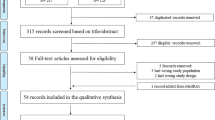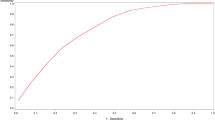Abstract
Kawasaki disease (KD) is a systemic vasculitis and primarily affects children <5 years of age. Intensive care unit (ICU) admission is unusual, but there can be associated severe complications in KD patients. This study was conducted to identify risk factors for ICU admission. Retrospectively, we reviewed charts of all children who had a discharge diagnosis of KD from 2001 through 2009. Clinical presentation, laboratory data, and outcome were collected for analysis of the association with ICU admission in KD patients. Multifactor dimensionality reduction (MDR) was used to identify factor interactions. There were 334 KD patients, including 24 patients in ICU admission, included in the analysis. Coronary artery lesions (CALs) and failure of intravenous immunoglobulin (IVIG) treatment were more frequently found in the ICU group (P < 0.0001). Total counts of white blood cells, hemoglobin levels, C-reactive protein, and albumin levels showed significant association with ICU admission (P < 0.05). Moderate tricuspid regurgitation (TR) was found only in the ICU admission group. MDR analyses of factor interactions identified that TR interacted with CAL with a prediction accuracy of 77.78 %. (P = 0.001). Patients with KD who are IVIG resistant and/or who are found to have CALs are at increased risk for ICU admission. Most importantly, moderate TR was significantly found in KD patients only in the ICU group. This may highlight the great value of moderate TR in predicting ICU admission for patients with KD.

Similar content being viewed by others
References
Kawasaki T, Kosaki F, Okawa S, Shigematsu I, Yanagawa H (1974) A new infantile acute febrile mucocutaneous lymph node syndrome (MLNS) prevailing in Japan. Pediatrics 54:271–276
Wang CL, Wu YT, Liu CA, Kuo HC, Yang KD (2005) Kawasaki disease: infection, immunity and genetics. Pediatr Infect Dis J 24:998–1004
Burns JC, Glode MP (2004) Kawasaki syndrome. Lancet 364:533–544
Park YW, Han JW, Park IS, Kim CH, Cha SH, Ma JS et al (2007) Kawasaki disease in Korea, 2003–2005. Pediatr Infect Dis J 26:821–823
Huang WC, Huang LM, Chang IS, Chang LY, Chiang BL, Chen PJ et al (2009) Epidemiologic features of Kawasaki disease in Taiwan, 2003–2006. Pediatrics 123:e401–e405
Nakamura Y, Yashiro M, Uehara R, Oki I, Kayaba K, Yanagawa H (2008) Increasing incidence of Kawasaki disease in Japan: nationwide survey. Pediatr Int 50:287–290
Kuo HC, Yang KD, Liang CD, Bong CN, Yu HR, Wang L et al (2007) The relationship of eosinophilia to intravenous immunoglobulin treatment failure in Kawasaki disease. Pediatr Allergy Immunol 18:354–359
Liang CD, Kuo HC, Yang KD, Wang CL, Ko SF (2009) Coronary artery fistula associated with Kawasaki disease. Am Heart J 157:584–588
Newburger JW, Takahashi M, Gerber MA, Gewitz MH, Tani LY, Burns JC et al (2004) Diagnosis, treatment, and long-term management of Kawasaki disease: a statement for health professionals from the committee on rheumatic fever, endocarditis, and kawasaki disease, council on cardiovascular disease in the young, American heart association. Pediatrics 114:1708–1733
Kuo HC, Wang CL, Liang CD, Yu HR, Chen HH, Wang L et al (2007) Persistent monocytosis after intravenous immunoglobulin therapy correlated with the development of coronary artery lesions in patients with kawasaki disease. J Microbiol Immunol Infect 40:395–400
Kuo HC, Wang CL, Liang CD, Yu HR, Huang CF, Wang L et al (2009) Association of lower eosinophil-related T helper 2 (Th2) cytokines with coronary artery lesions in kawasaki disease. Pediatr Allergy Immunol 20:266–272
Kuo HC, Liang CD, Wang CL, Yu HR, Hwang KP, Yang KD (2010) Serum albumin level predicts initial intravenous immunoglobulin treatment failure in kawasaki disease. Acta Paediatr 99:1578–1583
Lin IC, Kuo HC, Lin YJ, Wang FS, Wang L, Huang SC et al (2012) Augmented TLR2 expression on monocytes in both human kawasaki disease and a mouse model of coronary arteritis. PLoS One 7(6):e38635
Dominguez SR, Friedman K, Seewald R, Anderson MS, Willis L, Glode MP (2008) Kawasaki disease in a pediatric intensive care unit: a case-control study. Pediatrics 122:e786–e790
Kanegaye JT, Wilder MS, Molkara D, Frazer JR, Pancheri J, Tremoulet AH et al (2009) Recognition of a kawasaki disease shock syndrome. Pediatrics 123:e783–e789
Kuo HC, Yang KD, Juo SH, Liang CD, Chen WC, Wang YS et al (2011) ITPKC single nucleotide polymorphism associated with the kawasaki disease in a Taiwanese population. PLoS One 6:e17370
Kuo HC, Yu HR, Juo SH, Yang KD, Wang YS, Liang CD et al (2011) CASP3 gene single-nucleotide polymorphism (rs72689236) and kawasaki disease in Taiwanese children. J Hum Genet 56:161–165
Singh JP, Evans JC, Levy D, Larson MG, Freed LA, Fuller DL et al (1999) Prevalence and clinical determinants of mitral, tricuspid, and aortic regurgitation (the Framingham heart study). Am J Cardiol 83:897–902
Nath J, Foster E, Heidenreich PA (2004) Impact of tricuspid regurgitation on long-term survival. J Am Coll Cardiol 43:405–409
Akagi T, Rose V, Benson LN, Newman A, Freedom RM (1992) Outcome of coronary artery aneurysms after kawasaki disease. J Pediatr 121:689–694
Shulman ST, De Inocencio J, Hirsch R (1995) Kawasaki disease. Pediatr Clin North Am 42:1205–1222
Yang KD, Chang JC, Chuang H, Liang HM, Kuo HC, Lee YS et al (2010) Gene-gene and gene–environment interactions on IgE production in prenatal stage. Allergy 65:731–739
Kim M, Kim K (1999) Elevation of cardiac troponin I in the acute stage of kawasaki disease. Pediatr Cardiol 20:184–188
Checchia PA, Borensztajn J, Shulman ST (2001) Circulating cardiac troponin I levels in kawasaki disease. Pediatr Cardiol 22:102–106
Imakita M, Sasaki Y, Misugi K, Miyazawa Y, Hyodo Y (1984) Kawasaki disease complicated with mitral insufficiency. Autopsy findings with special reference to valvular lesion. Acta Pathol Jpn 34:605–616
Printz BF, Sleeper LA, Newburger JW, Minich LL, Bradley T, Cohen MS et al (2010) Noncoronary cardiac abnormalities are associated with coronary artery dilation and with laboratory inflammatory markers in acute Kawasaki disease. J Am Coll Cardiol 57:86–92
Shinohara T, Tanihira Y (2003) A patient with kawasaki disease showing severe tricuspid regurgitation and left ventricular dysfunction in the acute phase. Pediatr Cardiol 24:60–63
Acknowledgments
This study was supported in part by funding from grant NSC 100-2314B-182-061-MY3 from the National Science Council of Taiwan and grant CMRPG8B0151 and CMRPG8B0211 from Chang Gung Memorial Hospital, Taiwan. Neither institute had any influence on the collection, analysis, and interpretation of the data nor on the preparation of the manuscript.
Author information
Authors and Affiliations
Corresponding authors
Additional information
Ying-Jui Lin and I-Chun Lin had equal contribution to this article.
Rights and permissions
About this article
Cite this article
Lin, YJ., Lin, IC., Yu, HR. et al. Tricuspid Regurgitation in Acute Phase of Kawasaki Disease Associated With Intensive Care Unit Admission. Pediatr Cardiol 34, 250–255 (2013). https://doi.org/10.1007/s00246-012-0429-y
Received:
Accepted:
Published:
Issue Date:
DOI: https://doi.org/10.1007/s00246-012-0429-y




